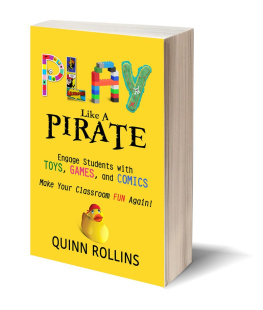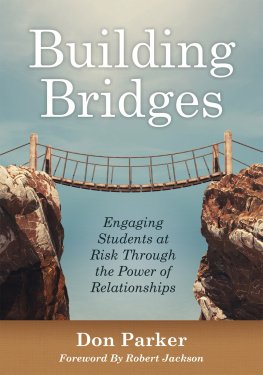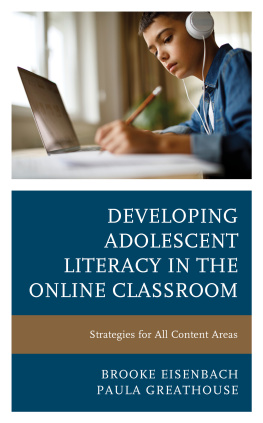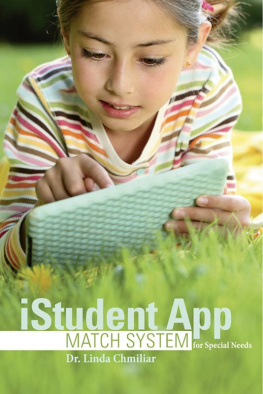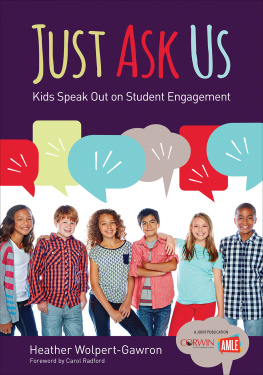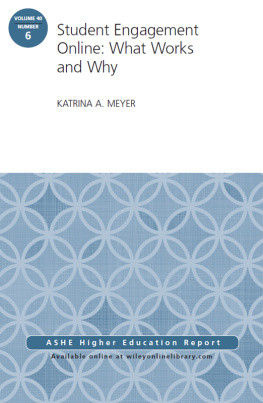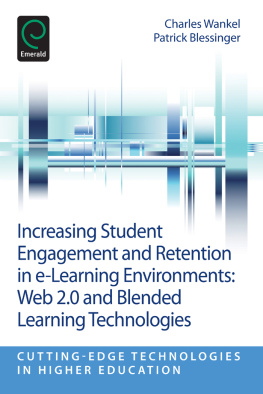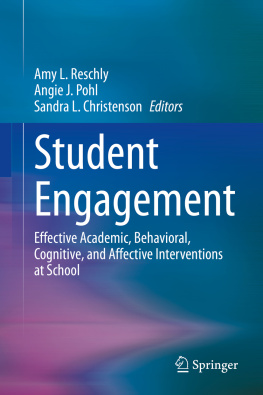Enhancing Student Learning in Middle School
A comprehensive introduction to middle school teaching, this textbook focuses explicitly on instructional strategies that encourage adolescents to become active participants in their own learning within a world of accountability and standardized testing. The author, an experienced middle school teacher and teacher educator, takes a constructivist approach to teaching that considers the whole child, including the emotional, psychological, social, and cultural variables uniquely associated with adolescence. The text examines the full range of middle school topics, from the development and diversity of middle school learners, to the structures, curriculum, and management of the classroom itself.
Special features include:
Empowering Middle School Students to Take Ownership of their Learning, Teaching Scenario, Key Points, and Creating an Anti-Oppressive Atmosphere in Your Classroom, textboxes help teachers gain a clearer understanding of content presented and encourage them to become reflective practitioners.
Callouts throughout explicitly link chapter content to NMSA standards.
Discussion of the unique challenges of actively engaging bilingual students, special needs students, and students exhibiting antisocial behavior.
Accounts about middle school students illustrate the ways that adolescents think about school and learning.
A chapter that focuses on ways that teachers can apply the general teaching strategies to specific subject areas.
Sample Lesson Plans, Focus Questions, Chapter Summaries, Journal Entries, and Student Activities/Assignments are included throughout to encourage readers to actively participate with the text.
Martha Casas is an Associate Professor of Teacher Education at the University of Texas at El Paso.
Enhancing Student Learning in Middle School
Martha Casas

NEW YORK AND LONDON
First published 2011
by Routledge
270 Madison Ave, New York, NY 10016
Simultaneously published in the UK
by Routledge
2 Park Square, Milton Park, Abingdon, Oxon OX14 4RN
Routledge is an imprint of the Taylor & Francis Group, an informa business
This edition published in the Taylor & Francis e-Library, 2010.
To purchase your own copy of this or any of Taylor & Francis or Routledges collection of thousands of eBooks please go to www.eBookstore.tandf.co.uk.
2011 Taylor & Francis
All rights reserved. No part of this book may be reprinted or reproduced or
utilised in any form or by any electronic, mechanical, or other means, now
known or hereafter invented, including photocopying and recording, or in any
information storage or retrieval system, without permission in writing from
the publishers.
Trademark Notice: Product or corporate names may be trademarks or registered
trademarks, and are used only for identification and explanation without
intent to infringe.
Library of Congress Cataloging in Publication Data
Casas, Martha.
Enhancing student learning in middle school / by Martha Casas.
p. cm.
1. Middle school teaching. 2. Middle school education. I. Title.
LB1623.C37 2010
373.1102dc22
2010013879
ISBN 0-203-84710-5 Master e-book ISBN
ISBN 13: (hbk) 978-0-415-80176-8
ISBN 13: (pbk) 978-0-415-80177-5
ISBN 13: (ebk) 978-0-203-84710-7
I dedicate this textbook to my parents Roberto and Enriqueta Casas whose love and support gave me the strength to be the person that I am.
Contents
Illustrations
FIGURES
1.1 | El Ojo |
2.1 | T-Chart for Identifying Elements of Direct Instruction and Constructivist Teaching |
3.1 | Boy with Facial Hair |
4.1 | Trust Me |
7.1 | Beaner |
7.2 | Tongue in Cheek |
7.3 | La Chicana |
8.1 | T-Chart for Identifying Formal and Informal Assessments |
9.1 | Graphic OrganizerGalileo Galilei |
9.2 | Graphic OrganizerCsar Chvez |
9.3 | Venn Diagram Showing Similarities and Differences between Elementary and Middle School |
10.1 | Semantic Map |
10.2 | Vocabulary Word Map |
TABLES
6.1 | Blooms Taxonomy |
7.1 | Self-Reflection Instrument |
8.1 | Student Interview HandoutInitial Observations: Writing a Persuasive Narrative |
8.2 | Student Interview HandoutSubsequent Observations: Writing a Persuasive Narrative |
8.3 | A Holistic Rubric for Writing a Persuasive Narrative |
8.4 | Analytic Rubric for Debate Assessment |
9.1 | Behaviors for Helping Students Develop Higher Level Thinking Skills |
9.2 | Early American Industrialists: K-W-L |
9.3 | Early American Industrialists: K-W-L Completed |
10.1 | Rubric for Assessing Presentations |
10.2 | Holistic Rubric |
10.3 | Adapted Knowledge Rating Scale |
11.1 | The Six Major Types of Involvement that Need to Be Encouraged in Schools |
BOXES
6.1 | Action Verbs for Making Objectives Explicit |
9.1 | Self-Evaluation Form to Assess the Cooperative Group Process |
10.1 | Who is George Washington? |
10.2 | Different Writing Texts |
10.3 | Oral Performance Activities |
Preface
Todays middle school teachers need to work successfully with their students to promote learning. In addition to being competent in their content areas, teachers should establish positive working relationships with their students and help children create positive relationships with each other. When students are engaged in learning, they are more likely to complete school assignments, feel empowered, be more cooperative, and misbehave less in the classroom. Encouraging students to become engaged in learning is a key to student success. Enhancing student engagement in learning in young adolescents requires teachers to understand adolescent behavior, the social and cultural characteristics of their students, and how to make learning meaningful. For example, how can teachers make the reading of Old Yeller an enjoyable experience when students can easily rent the DVD? In short, how can teachers compete with youngsters fascination with technology? In spite of the fact that advances in technology have made reading in school more challenging for teachers, motivating students to read is still a reality. Teachers who work to establish positive interpersonal relationships with their students can indeed make school a fun and exciting place to bea place where middle school students can enjoy reading


